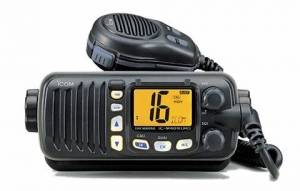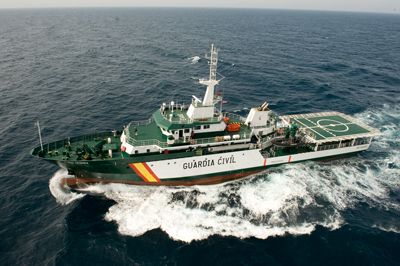How to make your navigation safe, How to react when receiving a MAYDAY.
Sailing advice
-
Make sure your nautical license and statutory documentation is up to date. Check that your vessel is sea worthy and that communication and other equipment is operating properly.
-
 Check the weather forecast for the area where you intend to sail. Do not sail in bad weather or in conditions of poor visibility. The national weather centre (Instituto Nacional de Meteorología), Coastal radio stations by Telefonica and of maritime safety centres permanently issue weather bulletins. They can be consulted by telephone, by radio or ask in your marina or nautical club.
Check the weather forecast for the area where you intend to sail. Do not sail in bad weather or in conditions of poor visibility. The national weather centre (Instituto Nacional de Meteorología), Coastal radio stations by Telefonica and of maritime safety centres permanently issue weather bulletins. They can be consulted by telephone, by radio or ask in your marina or nautical club. -
Always check your bow waters for swimmers, other smaller vessels, fishing gear or other obstacles.
-
Advise the maritime authority in your nautical club as well as friends and family of your expected date/time of your departure and the expected date/time of your arrival to your destination and return date/time.
-
Do not allow more crew members than is permitted.
-
The free telephone number for emergencies (900 202 202 in Spain) can be used to advise of dangerous situations as seen at sea or from the land.
-
Do not go out to sea without an anchor. In case of breakdown or running out of fuel, it may prevent the vessel from being carried out to the high seas.
-
Carry insurance cover for you vessel and its crew. For any occurrences or if towing is required having insurance cover is important.
-
If you are in danger tran
 smit the signal MAYDAY MAYDAY MAYDAY in VHF, channel 16 or by telephone on 2.182 kHz and activate the distress beacon. If you need help but you are not in immediate danger, transmit the signal PAN, PAN, PAN in the same frequencies. In these cases a mobile phone is NOT a good option because its’ range is short and it is difficult to obtain a precise location.
smit the signal MAYDAY MAYDAY MAYDAY in VHF, channel 16 or by telephone on 2.182 kHz and activate the distress beacon. If you need help but you are not in immediate danger, transmit the signal PAN, PAN, PAN in the same frequencies. In these cases a mobile phone is NOT a good option because its’ range is short and it is difficult to obtain a precise location.
If you see or receive distress signals from a nearby vessel
-
You should go to its rescue so long as you do not place yourself at risk.
-
Contact the Maritime rescue service (VHF canal 16 o 2.182 Khz.) or the closest maritime post and contact other nearby vessels.
-
If you do not have communication equipment available, warn nearby vessels with distress signals. If you are not able to provide help, go to the nearest port to report the situation.


